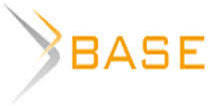Развитие исторических и антропологических знаний о Центрально-Азиатском регионе в Западной Европе и США
Усиление интеграционных процессов в мире, трансформация современной идентичности и риск потери «самости», а также снижение чувства единства в полиэтническом обществе – все это порождает необходимость научных исследований национальной идентичности. На сегодняшний день в мире функционируют несколько институтов и центров по исследованию идентичности узбеков и других народов Центральной Азии. Были исследованы вопросы религиозной (исламской) идентичности, гендерные взаимоотношения, культурное наследие, советская политика по отношению к местной культуре (REEI, IU Bloomington; IEAS, UC Berkeley; CEERES, UChicago (США) и др.); вопросы изучения истории, археологии, этнологии, антропологии, лингвистики, миграционные процессы народов Средней Азии и Кавказа (RSAA, Cambridge; SOAS, ULondon; SSS, UManchester (Великобритания) и др.); вопросы узбекской идентичности и идентификации, исламской культуры и идентичности, святые места, теоретическая антропология (Max Planck ISA (Германия)); а также продолжают свои исследования некоторые центры в Европе (ESCAS, CASCA) и США (CESS) и др. Вышеперечисленные научные проекты, которые направлены на исследование идентичности (национальной, этнической) узбеков, также показывают актуальность и востребованность темы в международном масштабе. Целью статьи является показать динамику развития этих знаний на Западе, акцентируя внимание на теме идентичности узбекского народа, дать краткую характеристику и обозначить особенности каждого периода.

















Пока никто не оставил комментариев к этой публикации.
Вы можете быть первым.
Абашин, С.Н. От редколлегии // Антропологический форум, 2014. № 28, С. 137-140.
Аскаров, М. Анализ категорий идентичности в конце XX – начале XXI века на территории современного Узбекистана (на основе англоязычных материалов) // Научный результат. Социальные и гуманитарные исследования. 2019. Т. 5. № 4. С. 62-77. DOI: 10.18413/2408-932X-2019-5-4-0-6
Аскаров, М. Англоязычная антропология о природе узбекской идентичности в конце XIX – начале XX вв. // Вестник антропологии. 2020. № 1. (49). С. 239-250. DOI: 10.33876/2311-0546/2020-49-1/239-258
Байбурин, А. От редактора // Антропологический форум. 2004. № 1. С. 96-97.
Горшенина, С. «Средняя / Центральная Азия»: не более чем «этикетка» для сложного историко-культурного региона с меняющимися границами // Антропологический форум. 2016. № 28. С. 40-47.
Ибаньез-Тирадо, Д., Марсден, М. Антропологические исследования Центральной Азии в западной науке // Антропологический форум. 2016. № 28. С. 51-52.
Петрик, Б. Что такое «региональные исследования» в современной антропологии (на примере Центральной Азии) // Антропологический форум. 2016. № 28. С. 83-89.
Ривз, М. Антропология Средней Азии через десять лет после «состояния поля»: стакан наполовину полон или наполовину пуст? // Антропологический форум. 2014. № 20. С. 61-66.
Ривз, М. След, траектория, точка давления: как переосмыслить «региональные исследования» в эпоху миграций // Антропологический форум. 2016. № 28. С. 97-116.
Смит, С. Современные тенденции в антропологических исследованиях // Антропологический форум. 2004. № 1. С. 77-78.
Соколовский, С. Принцип Гераклита (три гипотезы о причинах изменения традиций в антропологических исследованиях) // Антропологический форум. 2004. № 1. С. 84-85.
Тревизани, Т. По тонкому льду: значение и перспективы антропологии Центральной Азии // Aтропологический форум. 2016. № 28. С. 122-125.
Ходжаев, А. Китайский фактор в Центральной Азии. Ташкент: Изд-во «Фан» Академии наук Республики Узбекистан, 2004. 136 с.
Abramson, D. and Karimov, E. Sacred Sites, Profane Ideologies: Religious Pilgrimage and the Uzbek State / in Sahadeo, J. & Zanca, R. (eds) // Everyday Life in Central Asia: Past and Present. Bloomington: Indiana University Press, 2007. Р. 319-338.
Adams, L. Celebrating independence: arts, institutions, and identity in Uzbekistan, Ph.D. dissertation, Sociology, University of California, Berkeley, 1999. 241 p.
Adams, L. Invention, institutionalization and renewal in Uzbekistan’s national culture // European journal of cultural studies. 1999. Vol. 2. № 3. Р. 355-373.
Akbarzadeh, Sh. A note on shifting identities in the Ferghana valley // Central Asian Survey. 1997. Vol. 16. № 1. Р. 65-68.
Akbarzadeh, Sh. The political shape of Central Asia // Central Asian Survey. 1997. Vol. 16. № 4. P. 517-542.
Akbarzadeh, Sh., Saeed, A. Islam and political legitimacy. London: Routledge Curzon, 2003. 200 p.
Akiner, Sh. Melting pot, salad bowl – cauldron? Manipulation and mobilization of ethnic and religious identities in Central Asia // Ethnic and Racial Studies. 1997. Vol. 20. № 2. P. 362-398.
Alexander, C. The Anthropology of Central Asia // International Encyclopedia of the Social and Behavioral Sciences. 2015. Vol. 3, 2nd ed. Oxford: Elsevier. P. 316-322.
Askarov, M. Book review. Mongolia: a political history of the land and its people // Ethnic and Racial Studies. 2020. DOI: 10.1080/01419870.2020.1824002
Bennigsen, A. Islam in the Soviet Union: Religious and national problems // Religion and Atheism in the USSR and Eastern Europe. Ottawa: Carleton University Press, 1978.
Bennigsen, A. Islam in the Soviet Union: The religious factor and the nationality problem, in Bociurkiw, B. and Strong, J. (eds) // Religion and Atheism in the USSR and Eastern Europe. London: Macmillan, 1975.
Bennigsen, A. Islamic or local consciousness among Soviet Muslims, in Allworth, E. (ed.) // Soviet Nationality Problems. New York: Columbia University Press, 1971.
Bennigsen, A. Modernisation and conservatism in Soviet Islam, in Dunn, D. (ed.) // Religion and Modernization in the Soviet Union. Boulder, CO: Westview, 1977.
Bennigsen, A. The Muslims of European Russian and the Caucasus / in Vucinich, W. (ed.) // Russia and Asia: Essays on the influence of Russia on the Asian Peoples. Stanford, CA: Hoover Institute Press, 1972.
Bennigsen, A., Broxup, M. The Islamic Threat to the Soviet State. London: Croom Helm, 1982.
Bennigsen, A., Lemercier-Quelquejay, C. “Official” Islam in the Soviet Union, Religion in Communist Lands. 1979. Vol. 7, III. P. 148-159.
Bennigsen, A., Wimbush, S. Muslim National Communism in the Soviet Union: a Revolutionary Strategy for the Colonial World. Chicago: Chicago University Press, 1979.
Bennigsen, A., Wimbush, S. Muslims of the Soviet Empire. London: Hurst, 1985. 294 p.
Carrère d’Encausse, H. Islam in the Soviet Union: Attempts at Modernisation // Religion in Communist Lands. 1974. Vol. 2. № 4-5. Р. 12-20.
Chari, S., Verdery, K. Thinking between the posts: postcolonialism, postsocialism, and ethnography after the Cold War, Comp. Stud. Soc. History. 2009. Vol. 51: 6. P. 6-34.
Doi, M.M. Gesture, Gender, Nation. Dance and Social Change in Uzbekistan, London: Bergin & Garvey, 2002. 152 p.
Edgar, A. Bolshevism, Patriarchy, and the Nation: The Soviet “Emancipation” of Muslim Women in Pan-Islamic Perspective // Slavic Review, 2006. Vol. 65.
Edgar, A. Tribal Nation: The Making of Soviet Turkmenistan, Princeton, New Jersey: Princeton University Press, 2004. 320 p.
Esenova, S. Soviet Nationality, Identity, and Ethnicity in Central Asia: Historic Narratives and Kazakh Ethnic Identity // Journal of Muslim Minority Affairs. 2002. Vol. 22. № 1. P. 11-38.
Ferrando, O. Manipulating the Census: Ethnic Minorities in the Nationalizing States of Central Asia // Nationalities Papers. 2008. Vol. 36. № 3. P. 489-520.
Ferrando, O. Soviet population transfers and interethnic relations in Tajikistan: assessing the concept of ethnicity // Central Asian Survey. 2011. Vol. 30. № 1. P. 39-52.
Fierman, W. Identity, Symbolism, and the Politics of Language in Central Asia // Europe-Asia Studies. 2009. Vol. 61, № 7. P. 1207-1228.
Fierman, W. Language and education in post-Soviet Kazakhstan: Kazakh-medium instruction in urban schools // The Russian Review. 2006. Vol. 65(1). P. 98-116.
Fierman, W. On Uzbek “Nationalization” // Anthropology & Archeology of Eurasia. 2004. Vol. 44: 4. P. 80-85.
Hanson, S. Central Asia and the Caucasus in the Contemporary Social Sciences, Social Science Research Council Items and Issues. 2004. Vol. 5. № 1-2. P. 20-21.
Hierman, B. Central Asian Ethnicity Compared: Evaluating the Contemporary Social Salience of Uzbek Identity in Kyrgyzstan and Tajikistan // Europe-Asia Studies. 2015. Vol. 67. № 4. Р. 519-539.
Hirsch, F. Empire of Nations: Ethnographic Knowledge and the Making of the Soviet Union. Ithaca: Cornell University Press, 2005. 392 p.
Kamp, M. The new woman in Uzbekistan: Islam, modernity, and unveiling under communism. USA: University of Washington Press, 2006. 320 p.
Kamp, M. Women-initiated unveiling: state-led campaigns in Uzbekistan and Azerbaijan // Anti-veiling campaigns in the Muslim World / edited by S. Cronin. London and New York: Routledge, 2014.
Kandiyoti, D. The politics of gender and the Soviet paradox: neither colonized, nor modern? // Central Asian Survey, 2007. Vol. 26. № 4.
Khalid, A. Islam after Communism: Religion and Politics in Central Asia. Berkley: University of California Press, 2007. 253 p.
Khalid, A. Making Uzbekistan: nation, empire, and revolution in the early USSR. Ithaca and London: Cornell University Press, 2015. 444 p.
Khalid, A. The Roots of Uzbekistan: Nation making in the early Soviet Union // Uzbekistan: political order, societal changes, and cultural transformations / ed. by M. Laruelle. Washington, D.C.: The George Washington University, 2017. P. 1-5.
Laruelle, M. The Nation narrated: Uzbekistan’s Political and cultural nationalism. London; New York, 2016.
Liu, M. Central Asia in the Post–Cold War World // Annual Review of Anthropology. 2011. Vol. 40. P. 115-131.
Liu, M. Detours from utopia on the Silk Road: ethical dilemmas of neoliberal triumphalism // Central Eurasian Studies Review. 2003. Vol. 2. № 2.
Lobacheva, N. On the History of the Paranja // Anthropology & Archeology of Eurasia. 1997. Vol. 36. № 2. P. 63-90.
Marsden, M. Southwest and Central Asia: Comparison, Integration or Beyond? / ed. by R. Fardon et al. // The SAGE Handbook of Social Anthropology, London: Sage, 2012. P. 340-365.
Megoran, N. Theorizing gender, ethnicity and the nation-state in Central Asia // Central Asian Survey. 2011. Vol. 18. № 1. P. 99-110.
Mesbahi, M. Central Asia and the Caucasus After the Soviet Union: Domestic and International Dynamics. Gainesville, FA: University of Florida Press, 1994.
Min Pun. The East-West Dichotomy: From Orientalism to Postcoloniality // IOSR Journal of Humanities and Social Science (IOSR-JHSS). 2019. Vol. 24. Issue 1. Ser. 8. P. 75-76.
Montgomery, D. Namaz, Wishing Trees, and Vodka: The Diversity of Everyday Religious Life in Central Asia / in Sahadeo J. & Zanca R. (eds) // Everyday Life in Central Asia: Past and Present, Bloomington, IN: Indiana University Press, 2007. P. 355-370.
Myer, W. Islam and Colonialism: Western Perspectives on Soviet Asia, London–New York: Routledge & Curzon, 2002. P. 207-237.
Pétric, B.-M. Uzbekistan Is Not a Society Based on the Ethnic Principle, But It Can Become That // Anthropology & Archeology of Eurasia. 2006. Vol. 44. № 4. P. 64-69.
Rafiq, A. Orientalism and Western Academia [Электронный ресурс] URL: https://www.academia.edu/36621637/ORIENTALISM_AND_WESTERN_ACADEMIA (дата обращения: 02.08.20).
Rasanagayam, J. Islam in Post-Soviet Uzbekistan: The Morality of Experience. Cambridge University Press, 2011. 213 p.
Roy, O. The New Central Asia: The Creation of Nations, New York: New York University Press, 2000. 222 p.
Said, E. Orientalism. London and Henley: Routledge & Kegan Paul, 1978. 368 p.
Said, E. Orientalism: Western Conceptions of the Orient. New Delhi: Penguin Books, 2001. 396 p.
Schoeberlein-Engel, J. Identity in Central Asia: Construction and Contention in the Conceptions of “Özbek”, “Tâjik”, “Muslim”, “Samarqandi” and Other Groups, PhD diss., Harvard University Press, 1994.
Zanca, R. Life in a Muslim Uzbek Village: Cotton Farming After Communism, Wadsworth: Cengage Learning, 2011. 212 p.